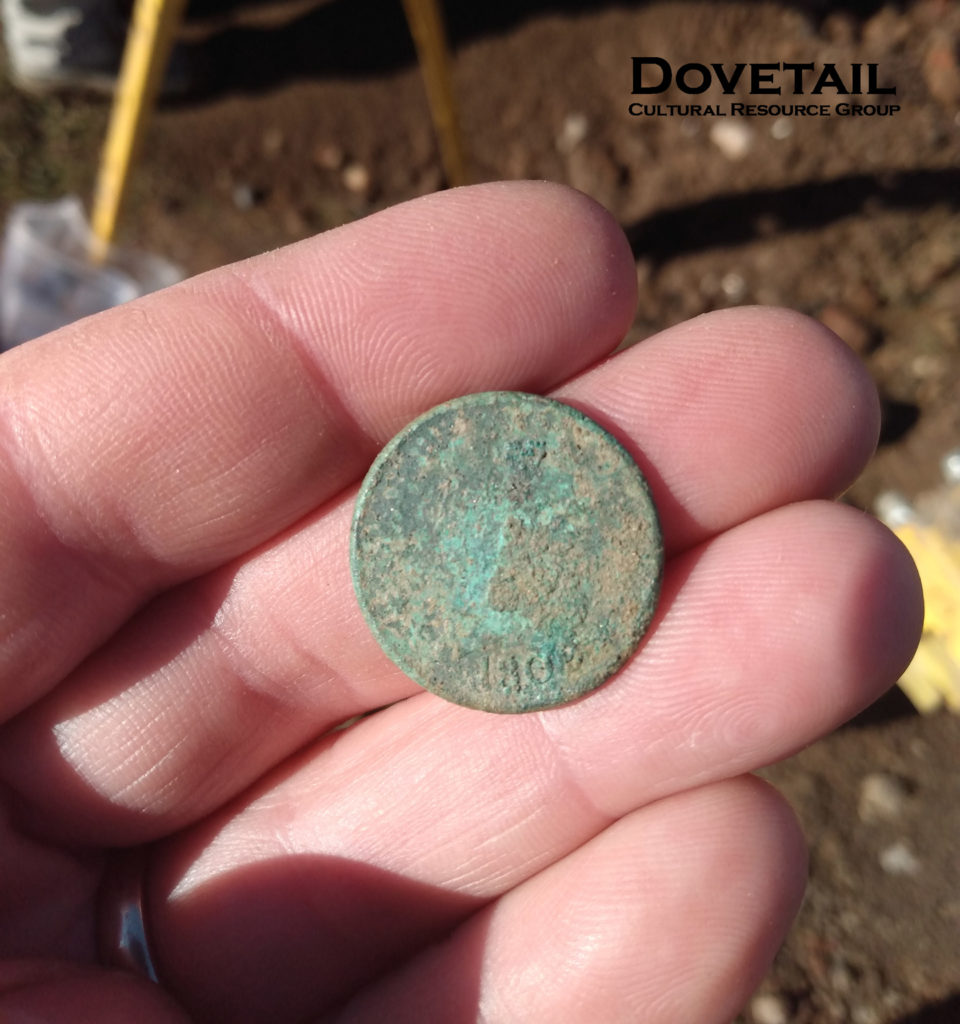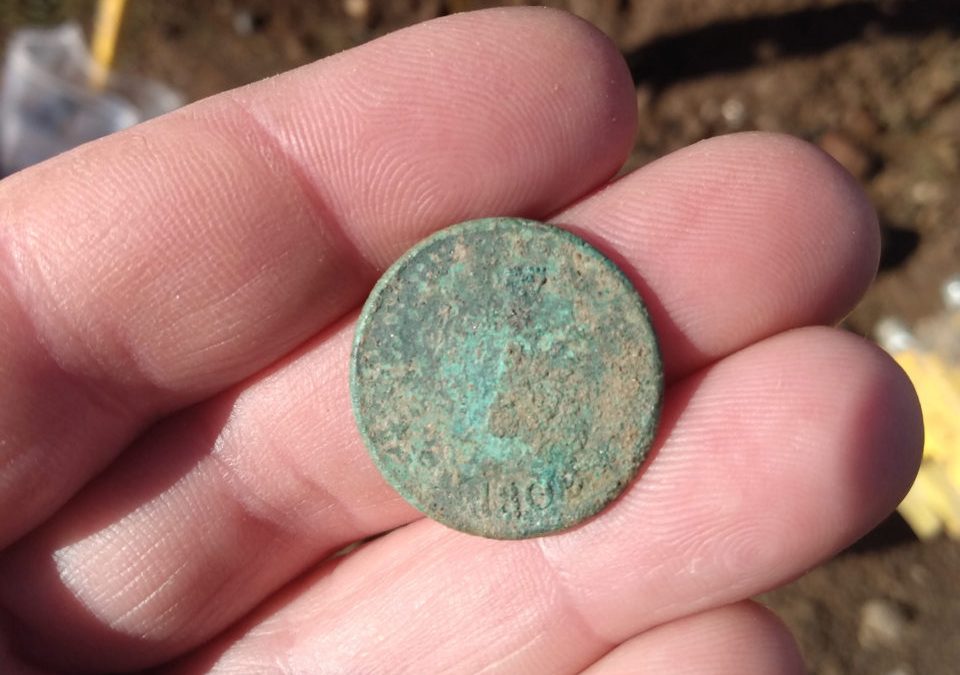By: Joe Blondino
Most of the artifacts that archaeologists find don’t give us an exact date for when they were used or deposited on a site. Typically, artifacts are assigned a “type”, and each type has a date range that is generally accepted based on previous research. For example, the projectile points that we refer to as the “Palmer” type date to between 10,000 and 9,300 years before present (Gardner 1989), and “creamware” ceramics date to between 1762, when they were introduced by Josiah Wedgwood, and about 1820, when other wares came into fashion (Jefferson Patterson Park and Museum 2002). However, we occasionally get lucky enough to find objects with very precise dates, and perhaps the best example of this are coins, which often bear the year in which they were minted. Dovetail archaeologists had the good fortune to find such an artifact recently at the Hieskell-White archaeological site (44SP0816) in downtown Fredericksburg, Virginia. While excavating the cellar floor of the circa-1795 house, archaeologists recovered an 1822 penny, giving them a terminus post quem (“TPQ” in archaeologese) for the layer in which the coin was found (Photo 1 and Photo 2). This Latin phrase translates to “time after which,” and refers to the earliest date that a particular layer of sediment could have been deposited. This means that if a coin from 1822 was found in a certain layer, then that layer could not have been deposited earlier than 1822, or the coin couldn’t have gotten there unless there was some sort of disturbance…or time travel. In this case, the 1822 date works perfectly for the site!

Photo 1: 1822 Coin Found During Excavations in Fredericksburg, Virginia.

Photo 2: Second Coin Recovered From Excavation, Dating to 1808.
The coin found at the Hieskell-White site doesn’t look like a modern penny, as it is significantly larger. These are generally referred to as “large cents” to differentiate them from the modern-sized penny, which wasn’t introduced until 1857. The 1822 date happened to be easy to read on this particular example, but sometimes the date on a coin can be difficult to make out if the coin is particularly worn. In these cases, there are still other clues we can go by to narrow down a possible date range. If the date on the Heiskell-White coin hadn’t been discernible, we might still have been able to see the outline of the bust on the obverse (or “heads”) side of the coin, which would have told us that it was a “Matron Head” cent that was only minted between 1816 and 1839. This is still a tighter date range than we get from many other artifact types (Coin Collecting Guide for Beginners 2014). Some older coins from Europe may feature the likeness of the head of state at the time the coin was minted, which can give us similarly tight date ranges. So the next time you drop a coin, don’t fret—you may just be giving future archaeologists an important clue to dating their site!
Any distributions of blog content, including text or images, should reference this blog in full citation. Data contained herein is the property of Dovetail Cultural Resource Group and its affiliates.
References:
Coin Collecting Guide for Beginners
2014 United States Large Cents. Electronic document, https://www.coin-collecting-guide-for-beginners.com/large-cents.html, accessed December 2020.
Gardner, William M.
1989 An Examination of Cultural Change in the Late Pleistocene and Early Holocene (circa to 6800 B.C.). In Paleoindian Research in Virginia: A Synthesis, edited by J. Mark Wittkofski and Theodore R. Reinhart, pp. 5–51. Special Publication 19. Archeological Society of Virginia, Richmond.
Jefferson Patterson Park and Museum
2002 Creamware. Electronic document, https://apps.jefpat.maryland.gov/diagnostic/ColonialCeramics/Colonial%20Ware%20Descriptions/Creamware.html, accessed December 2020.

